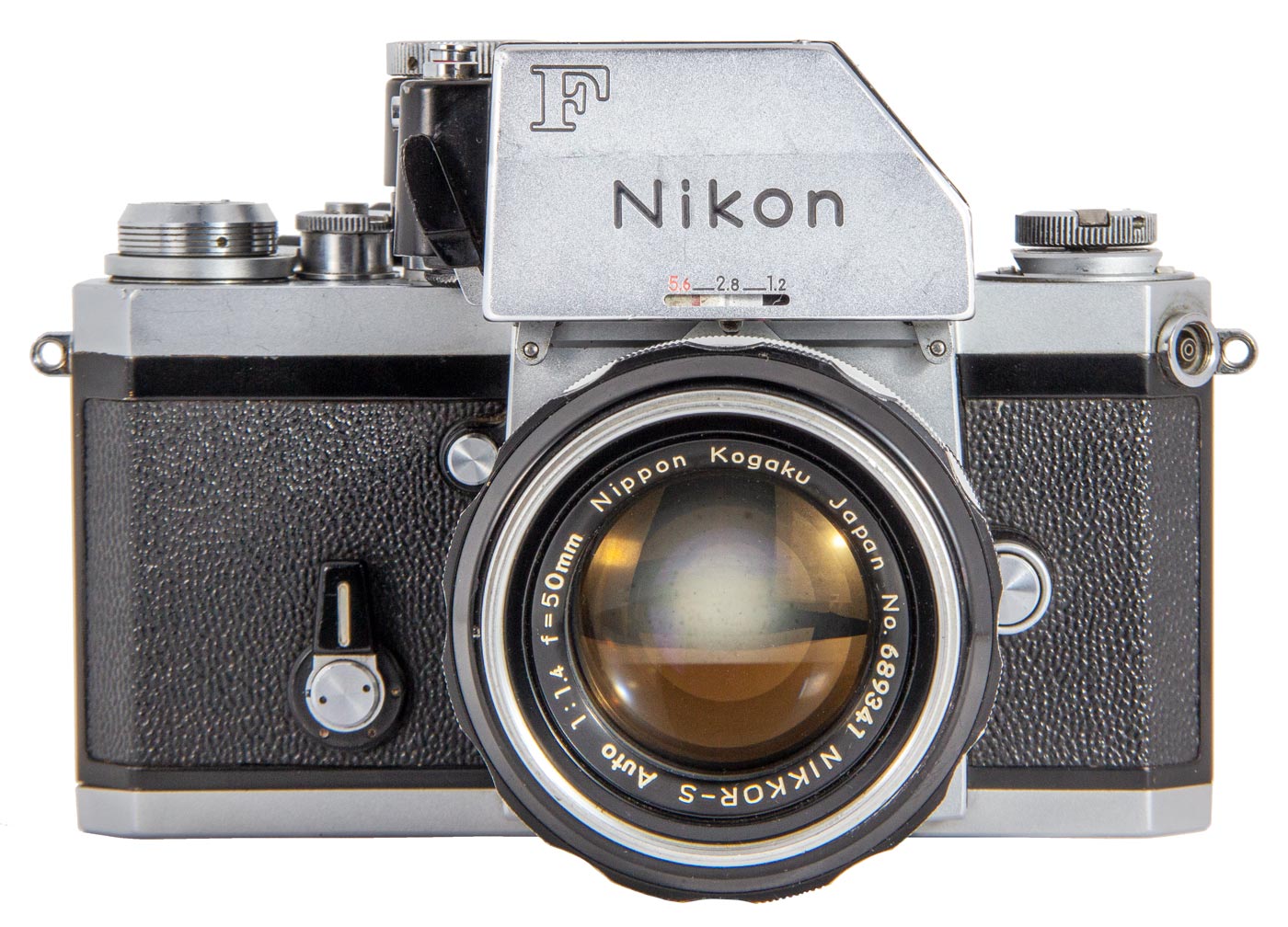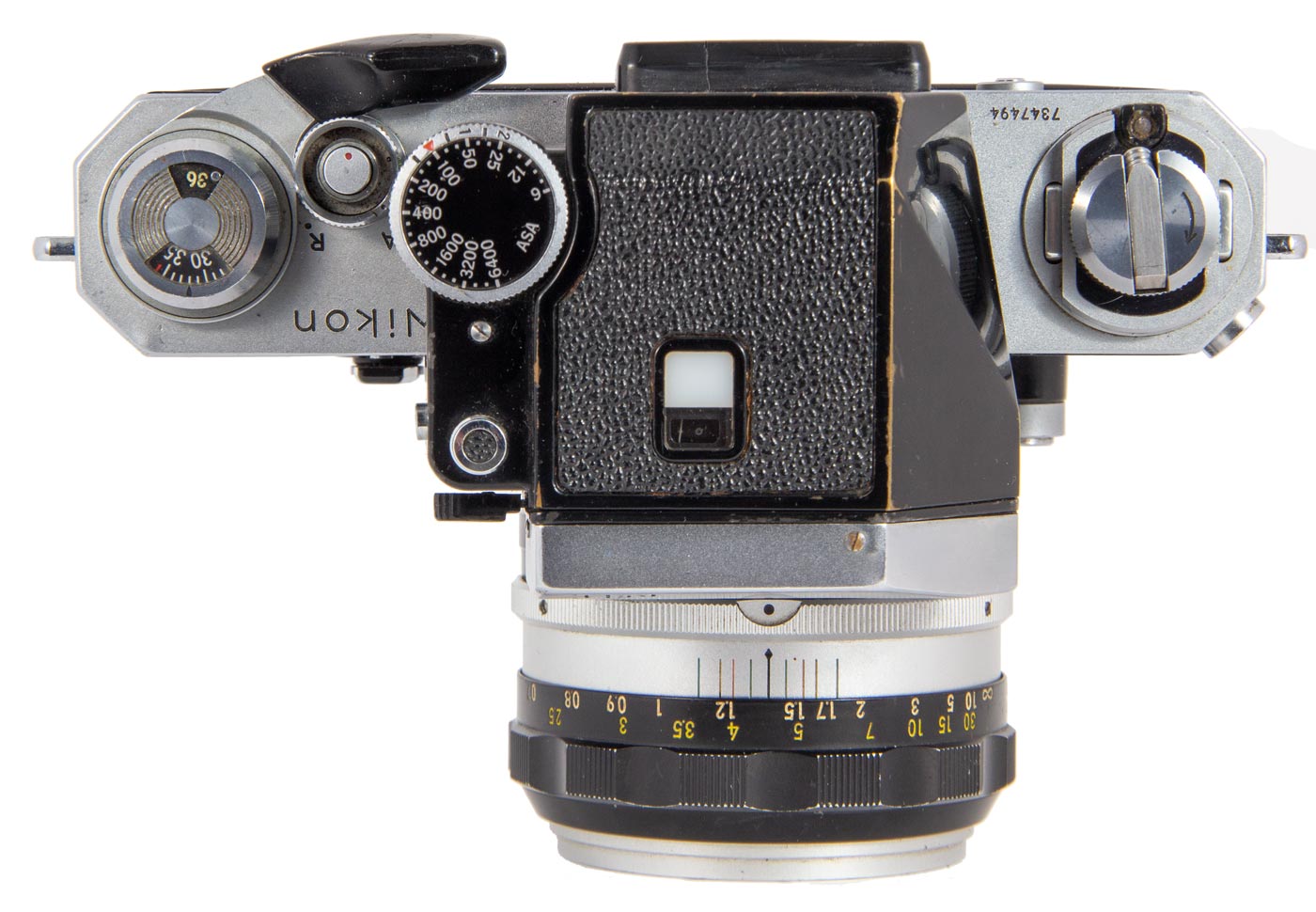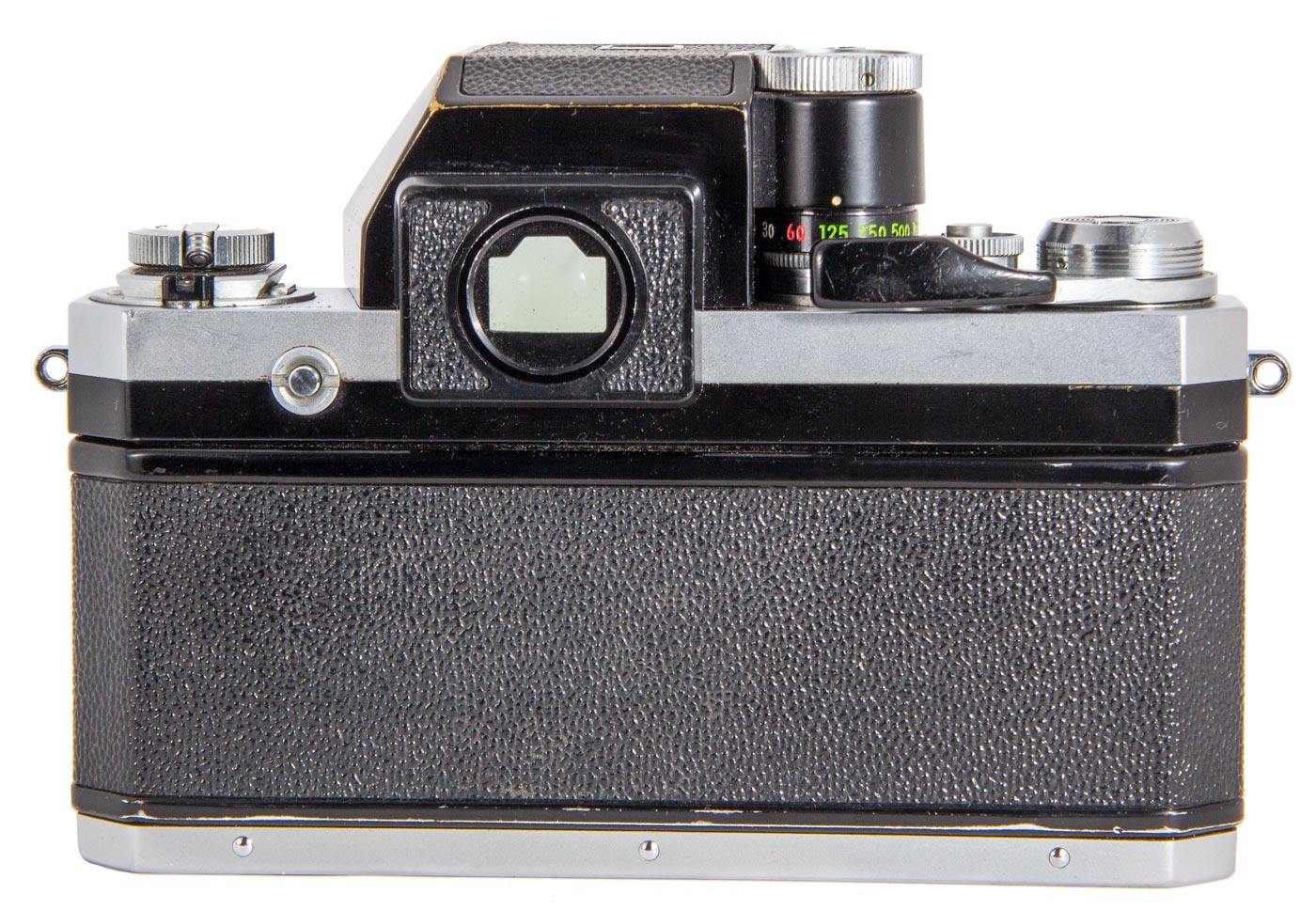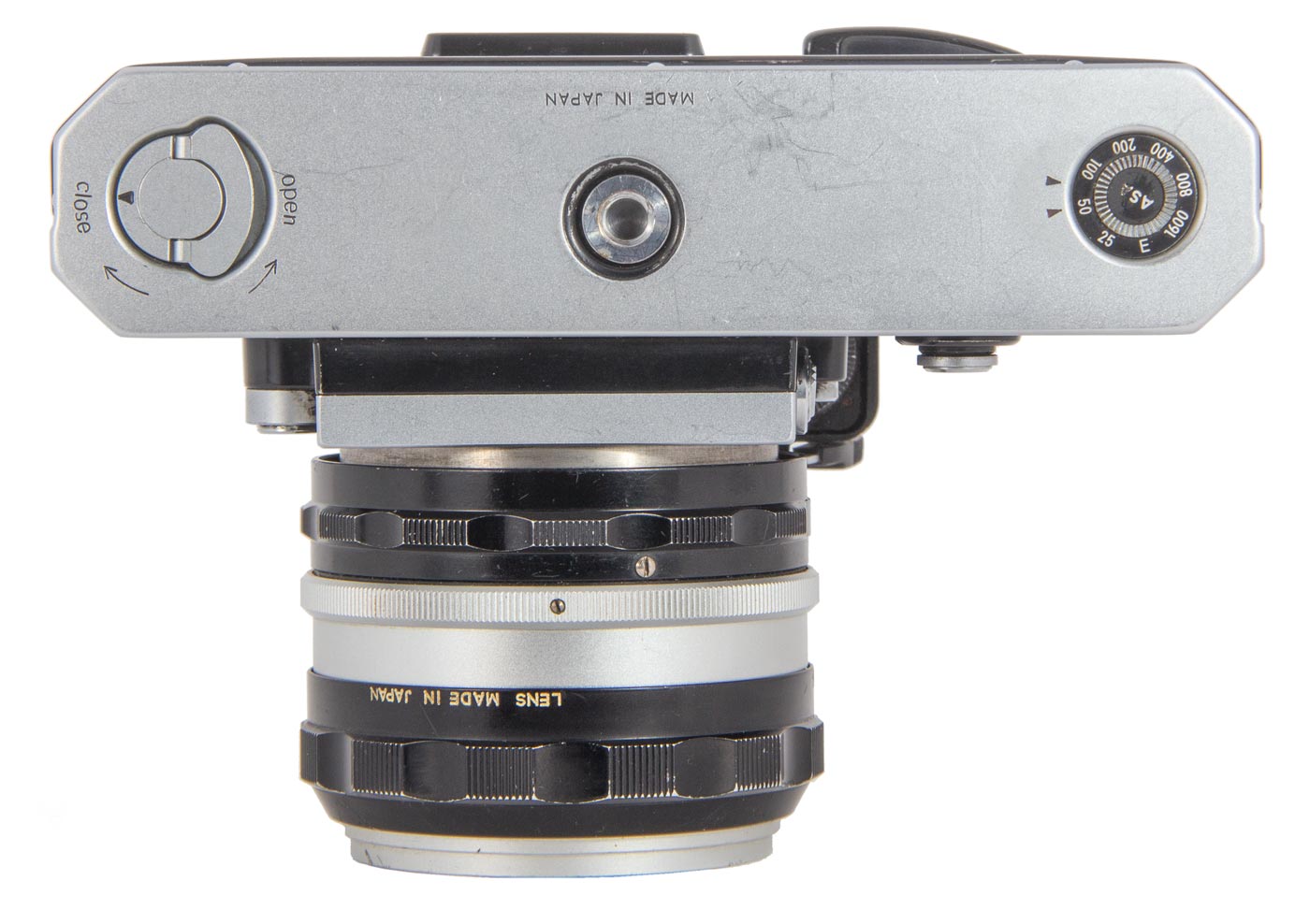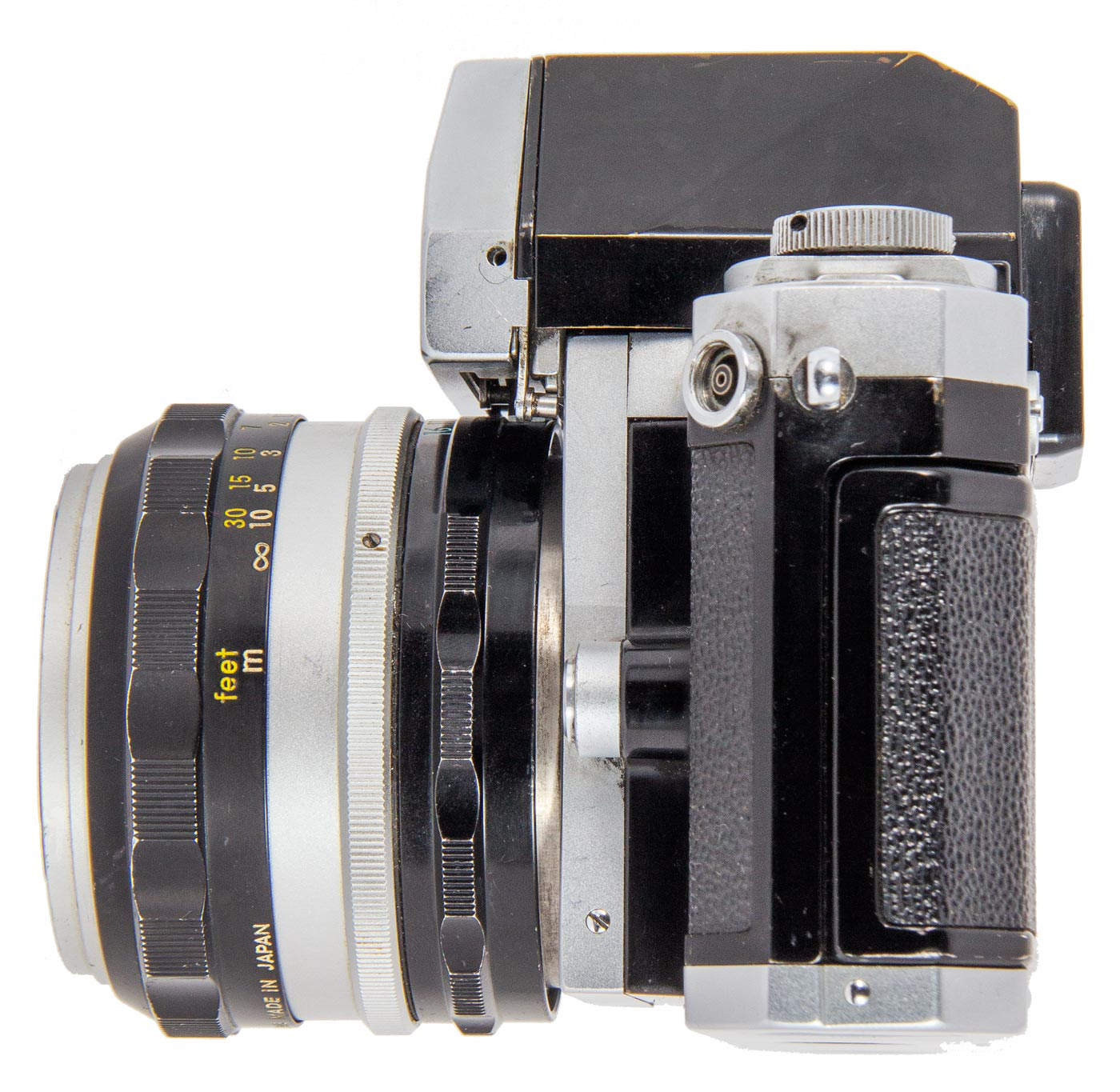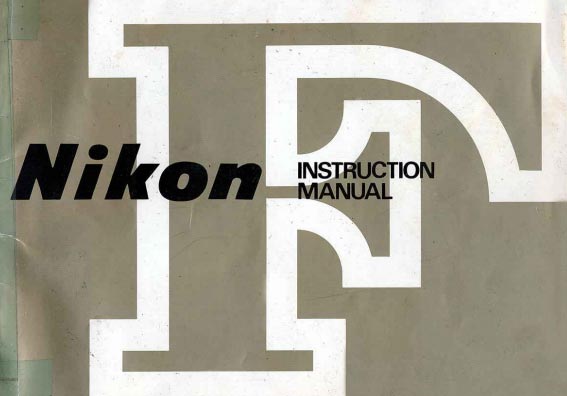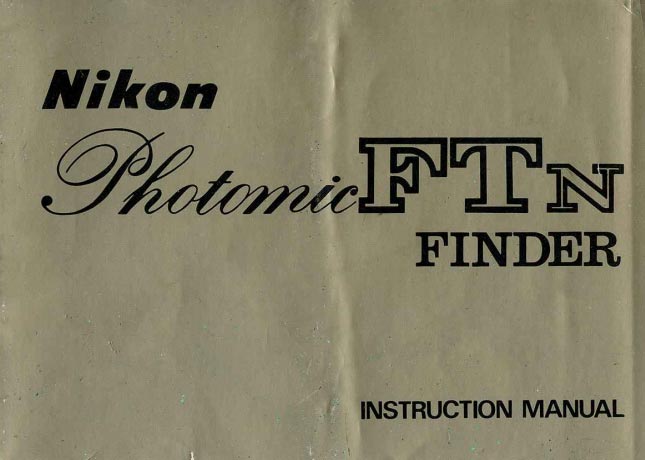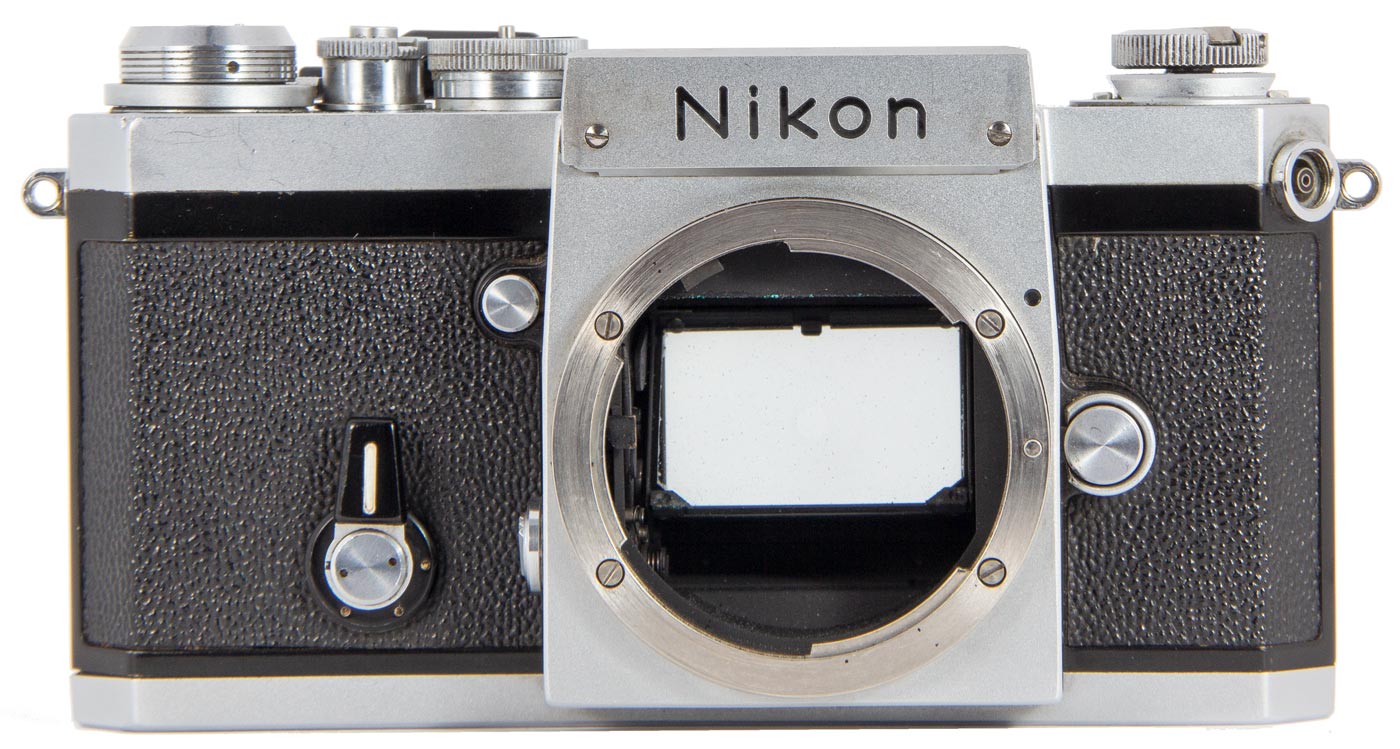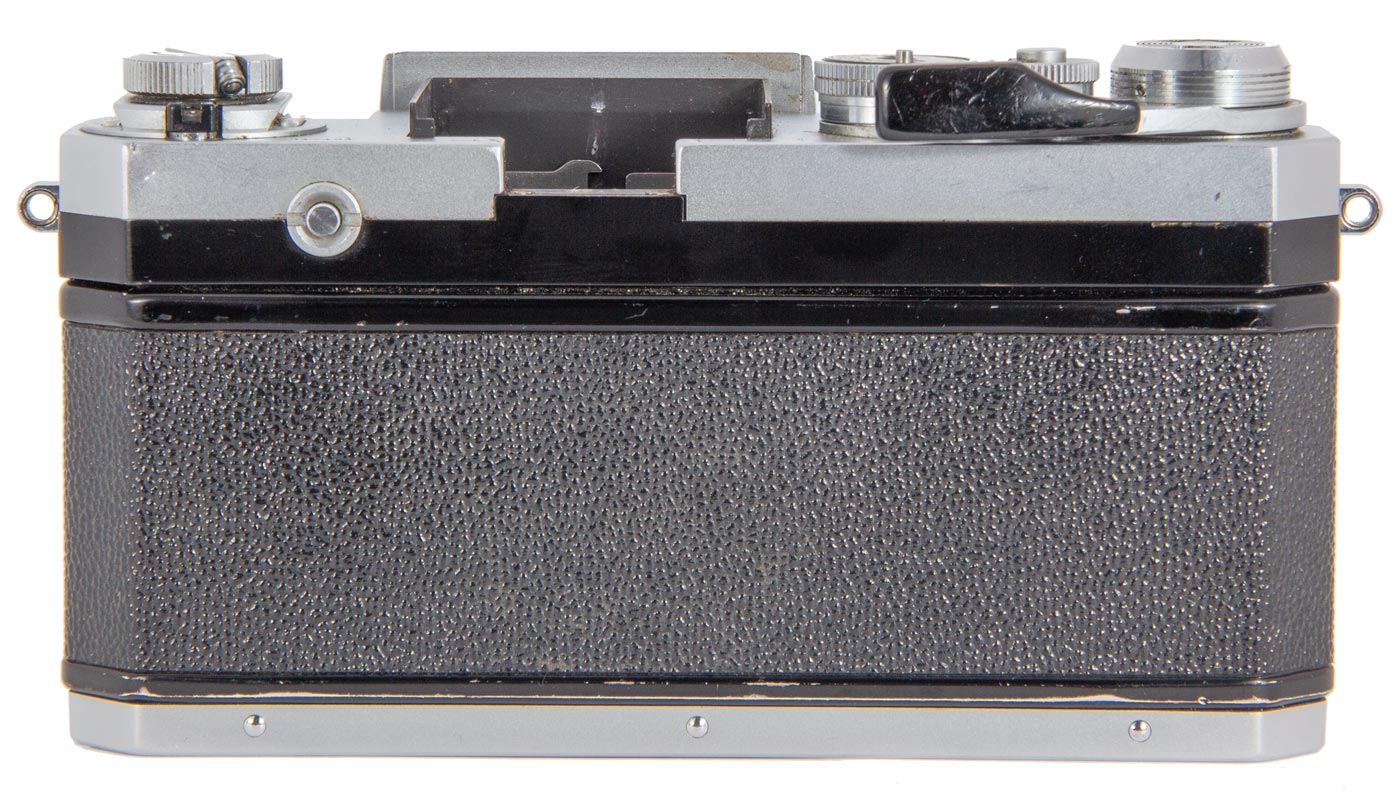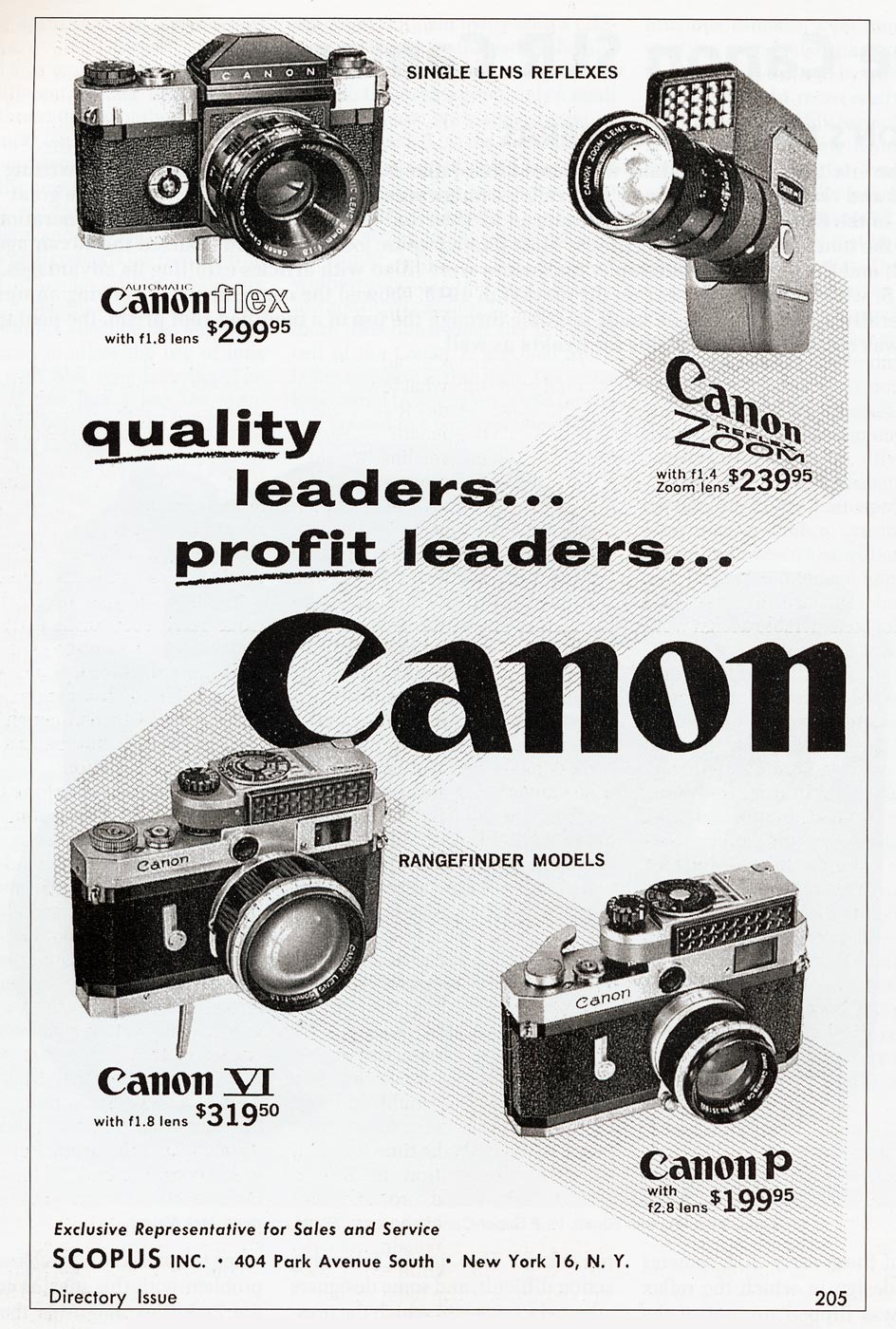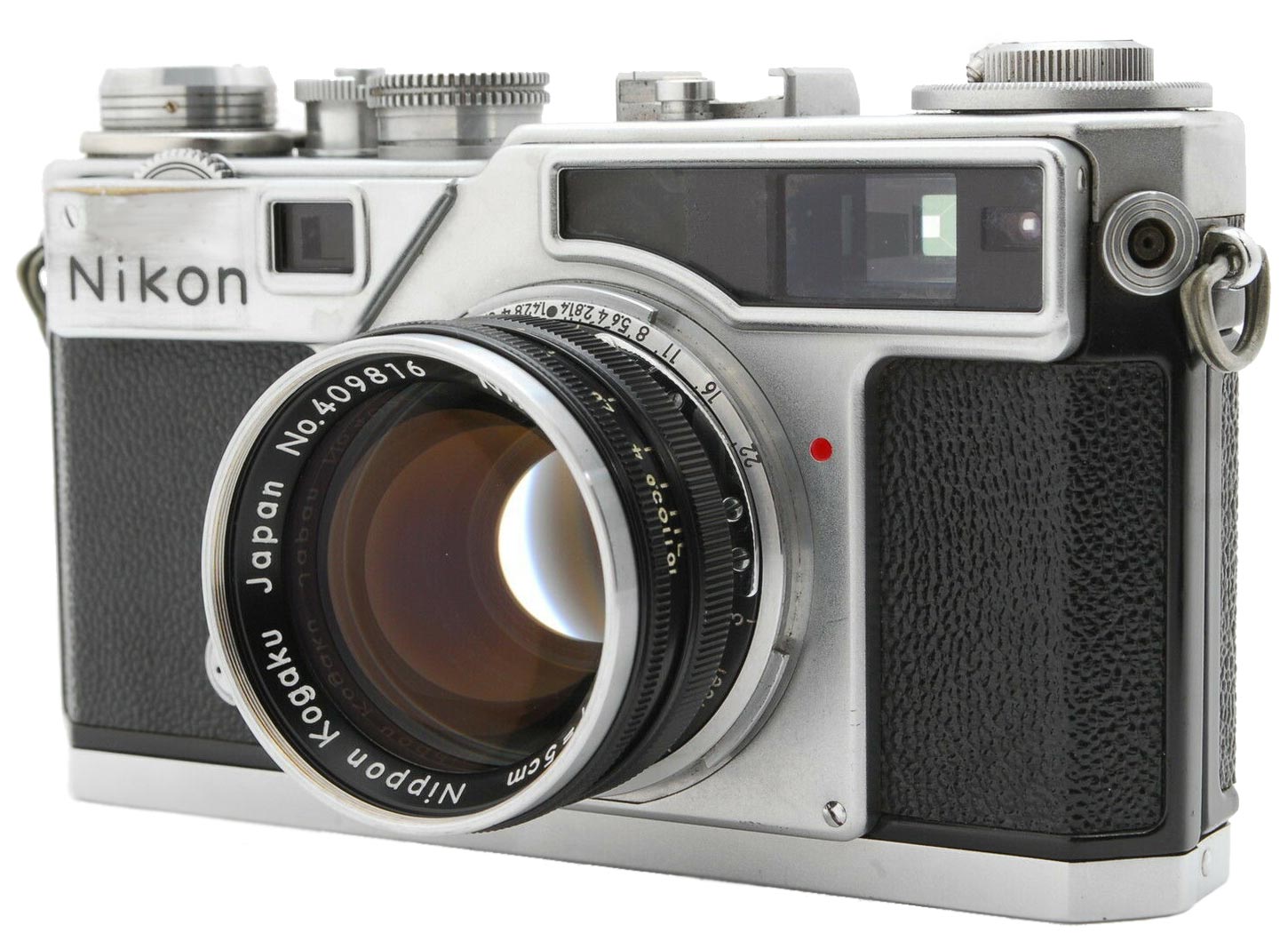
The Nikon F
was based on the Nikon SP rangefinder
camera (shown above), The two cameras show an obvious relationship. Their bodies are almost identical except for the mirror box and pentaprism. (This photo was purloined from E-bay for demonstration of the type. I do not own this camera.)
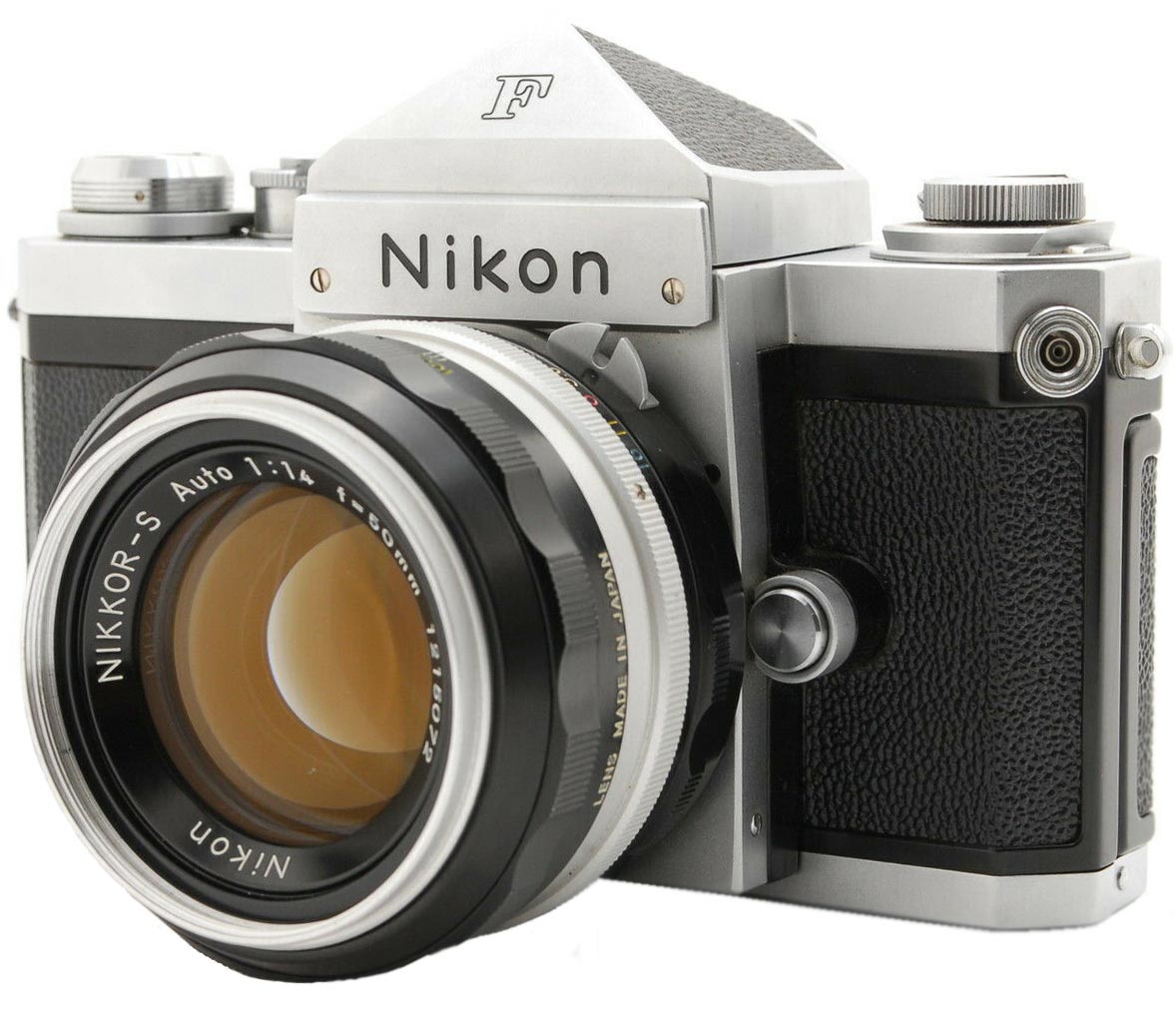
The original F was issued with a standard pentaprism eye level finder like this one. The layout of the controls was to be the industry standard until the advent of the electronic cameras of the 1980’s. (I do not own this camera. The photo was borrowed from E-bay.)
The Nikon F
O.K. I hear you. “What is a Nikon camera doing on your Canon website?” Well, I won’t make a habit of this. However, the Nikon F had a significant impact on Canon and contributed greatly to the poor showing of the Canonflex cameras. But it occurred to me that I had never even held a Nikon F camera much less used one.
I was browsing on E-Bay a few weeks ago and came across a late production “Apollo” Photomic F up for auction. Bids were low so I posted my own bid for what I considered a very low price. And I unexpectedly won the auction. Yes, yes, I know: buying a Nikon camera will not make me a better photographer! But I am a happier one and now I am a Nikon owner. But before we get to my new camera, lets have a little history.
A Little Nikon History
Nippon Kogaku K.K. (Japan Optics Corporation) was founded in 1917 as an optics division of the Mitsubishi Group. Mitsubishi, the eventual builder of the famous Japanese Zero fighter of World War II, was heavily engaged in military production. From its earliest days Nippon Kogaku was a supplier of military optics such as gunsights and rangefinders and scientific equipment such as microscopes and telescopes. By the 1930’s they were supplying lenses
for various makers of cameras. Seiki Kogaku (eventually to be called Canon) was one of their early customers.
After the war Nippon Kogaku began looking for commercial products as military work became scarce. At first they began by making lenses in the Leica M-39 and Contax mounts for the camera market. They began thinking about making cameras in 1946 and in 1948 announced the Nikon 1 rangefinder. They named the camera “Nikon” and it was later that the company changed its name to Nikon to promote brand identity. They toyed with the idea of making a Twin Lens Reflex as their first camera but settled finally on the 35mm format.
Nikon followed up in 1950 with the Nikon M, the Nikon S in 1951, the S2 in 1954 and the SP in 1957. The P stood for Professional and that camera was their finest of their rangefinder cameras.
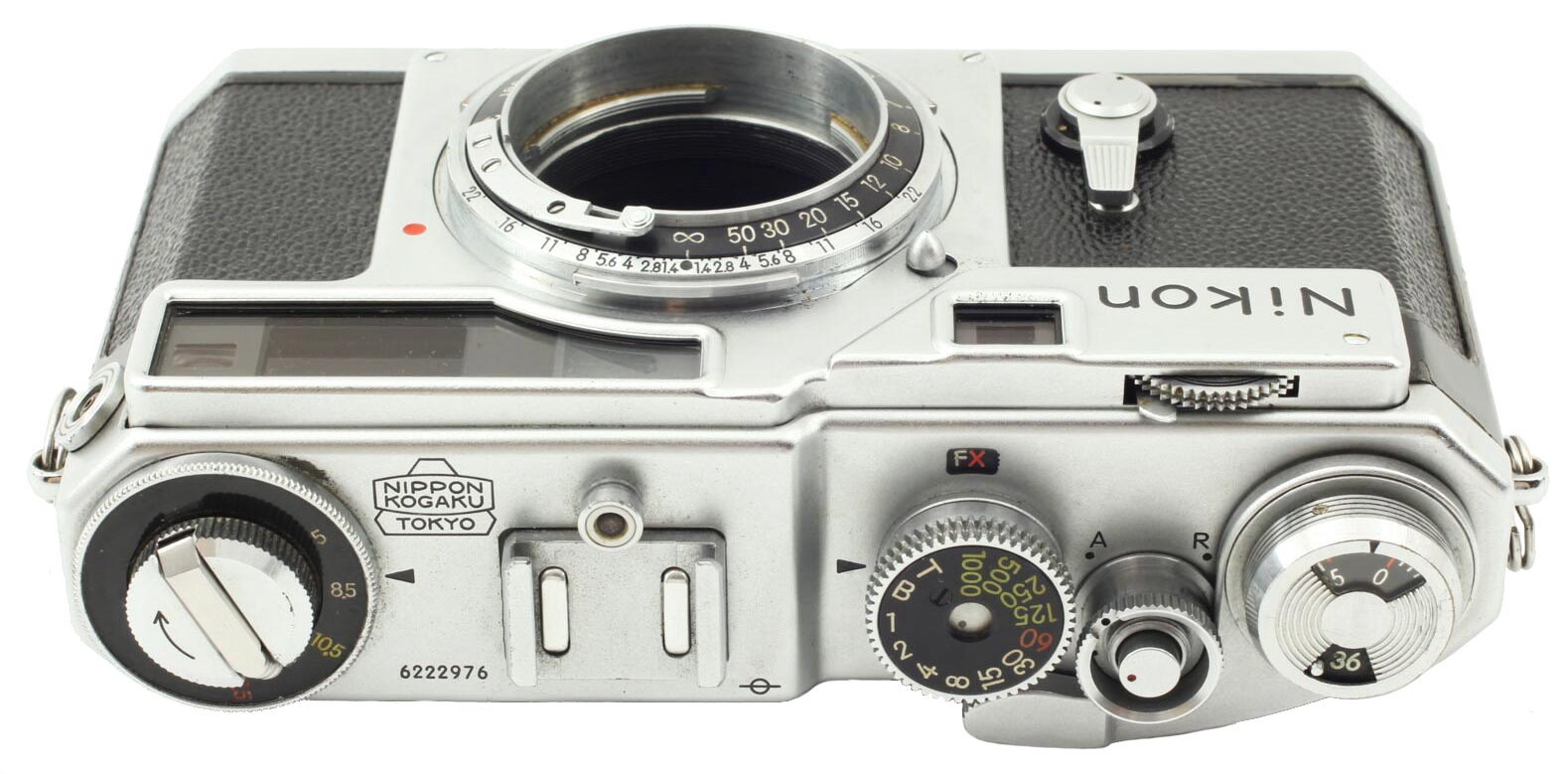
The top of the SP is a clean modern design and the layout is the standard that will dominate the SLR market into the 1980’s. Looking at the Model F on the right you can see the top deck has been copied over to the new model.
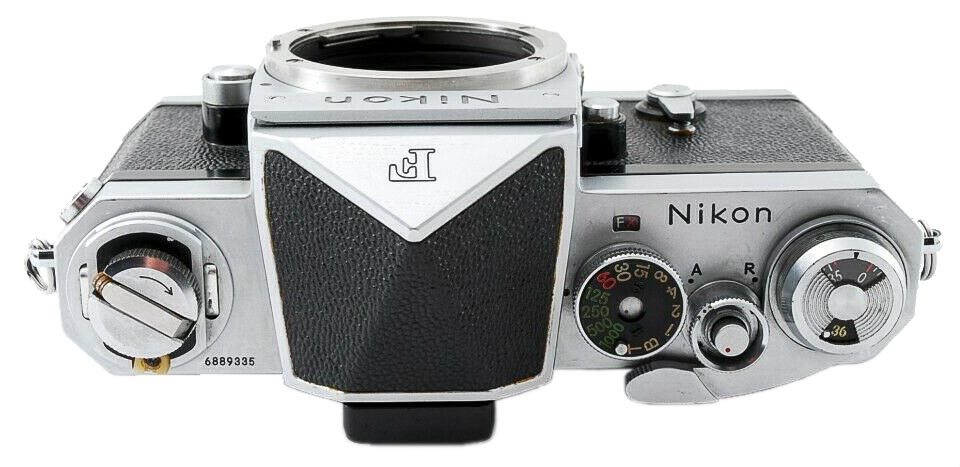
The top deck of the Nikon F maintains the same layout. The left side of the top deck appears identical to the SP. The body shape is the identical and the film back removes in the same manner as the SP for film loading.
By the time the SP was introduced those who knew the camera business knew that the future lay with the single lens reflex. Most of Japan’s major manufacturers, including Nikon, were developing SLR models. Nikon did not create a whole new camera but built their reflex camera on an SP rangefinder body by adding a mirror box and pentaprism and giving it a new bayonet lens mount.
When you compare the SP and the F bodies the similarity is immediately obvious. One web page I read suggested that 40% of the parts in the SP were interchangeable with parts in the F. A cursory examination of the two cameras side by side would certainly suggest this to be true.
The Nikon F was introduced to the public in April of 1959 at almost the same moment as the Canonflex. And this brings us back to Canon. The Nikon F was a run away success with over 800,000 units made while the original Canonflex sold 16,000. So what went wrong for Canon?
This is my new Nikon F. It is well used and shows signs of wear and some brassing on black parts. However it is fully functional. The lens is in good condition although the front element shows very faint cleaning marks.
My New Nikon F
The Nikon F was so successful that it was produced from 1959 through to 1973. In 1973 cosmetic changes were made just before production ended. Changes included a plastic tip on the winding lever and self timer lever as well as a threaded PC socket. This was not given a new model name but collectors have given them the name “Apollo” after the Apollo space program although these cameras have no connection to that program. My new camera is an “Apollo” F.
Over the production period three additional view finders were produced which contained internal light meters. In 1962 there was the Photomic Meter. It had a built in CdS meter which measured ambient light.
Then in 1965 Nikon came out with the Photomic T which had a match needle TTL meter. The final finder was the Photomic FTn which came out in 1968 which boasted a 60% center weighted TTL meter. The finder on my camera is the Photomic FTn.
Photomic is the name of the finder, not the camera. Throughout production the camera was simply the F. However, you will often see references to “Apollo” Nikon F’s or Nikon “Photomics”.
So, my camera is a very late production Nikon F with a Photomic FTn Finder and Nippon Kogaku 50mm f/1.4 lens. It is in excellent condition, it does show wear, and it is fully functional.
The FTn finder is a very large unit because Nikon created a TTL metering system which was stuffed into this finder. No changes to the camera were necessary but the finder was large and awkward looking.
The top of the FTn Finder on my camera shows some brassing along the edges from heavy use. The meter needle can be read in the view finder or on the top of the finder in the square window (white).
From the back the layout of the shutter dial connection is visible. The shutter is controlled from the top of the finder which keys into the shutter dial on the camera body.
On the bottom is the locking key that secures the back to the camera body. On the right is an ASA reminder dial which you set manually. You also must set the ASA on the FTn finder as well for accurate metering.
On the left end of the camera body is the PC Socket. There is no hot shoe on the camera but, just like the Canon F-1, there is a flash contact on the rim of the rewind crank. A Flash Coupler slides on over the rewinder providing a hat shoe.
This Nikon F is a beautifully made camera. It is solid and has the look and feel of a fine scientific instrument. I am not wild about the size and shape of the FTn Finder but Nikon was very clever to fit a TTL metering system into the unit without needing to modify the camera.
Metering is done through the viewfinder. A needle appears on the top edge of the field of view and it must be aligned with a notch in the display. There is also a window on the top of the FTn housing with a meter needle so that metering can be done by looking at the top of the housing. This would be essential in situations where it is not possible to look through the viewfinder.
Like the Model SP, the Nikon F reloads film by removing the back from the body. This can be more awkward than a swing back because it gives you an extra loose piece to keep track of while you load your film. However, loading is easy and there is lots of room to work with the back out of the way.
My Nikon F without a viewfinder attached. The resemblance to Nikon SP is obvious. This is an F model and it will accept the original eye level pentaprism viewfinder.
The back of the Nikon F comes right off the camea body to load the film. It makes loading very easy but it gives you an extra piece of equipment to keep track of during loading.
What happened to the Canonflex?
As I have said above, Nikon was a wild success while the Canonflex sales, although not a disaster, were certainly modest. Yet the Canonflex was an excellent camera capable of very fine photography. So what went wrong.
The first thing you notice is that Nikon came to market with a much more developed range of optional lenses and equipment. On the other hand, Canon never really developed a “system” of options for the Canonflex. They were short of lenses and created a very limited range of accessories.
The Canonflex has a “standard” layout except for the film advance mechanism. Canon pursued their love affair with the bottom trigger winder. I have used this and find it effective but it is awkward. This winding method never received enthusiastic reviews and I don’t think it helped camera sales.
Bob Shell, in his very excellent book “Canon Compendium” suggests a marketing problem. At the time the Canonflex was introduced Canon was represented in the United States by Scopus Inc. who apparently were in financial trouble at the time the Canonflex was introduced. Bob Shell suggests that Scopus did not have the resources or interest in the new camera to promote it vigourously. And, unfortunately, Nikon was represented by a talented and well known promoter who set out to make Nikon a household name.
By the time Canon had switched its distribution to Bell and Howell in 1962 Nikon had dominated the market amongst professional and advanced amature photographers. The Canonflex cameras never recovered.
But I think this misses the most obvious problem. As I write this I have a Canonflex and my Nikon F on the desk in front of me. The Canonflex is a fine camera. I have taken mine out a shot some film with it and I like it. It reminds me of my Minolta SR-1.
The design of the Canonflex is very refined. It is modern, uncluttered and the finish is excellent. There are 11 separated pieces of leatherette setting off this design. Very elegant.
I then pick up my Nikon F. The design is not that different except for the film advance lever on the top deck. But the impression the camera makes is quite different. It is not so finely designed. The controls are more traditional, the shutter dial is smaller, and it looks more like a German camera. It gives me the impression of a precision instrument. The Canonflex seems to be more of a consumer appliance. I may not be explaining this very well.
If I was a customer in the camera store with both cameras in front of me, I would feel the Nikon is a fine instrument in the German mold. It would simply give me more confidence. I would have chosen the Nikon.
Canon did not begin to recover their market position until the advent of the “F” series of cameras beginning with the Canon FX. The design of the FX followed the Nikon lead and appeared more traditional and more like a scientific instrument than a consumer product. I think the Canonflex had marketing problems because it was over styled.
Shooting the Nikon F
My Nikon F is fully functional, even the Photomic FTn Finder meter. Well, I don’t need an invitation! I loaded a roll of Ilford Professional 100 and set out to see how this camera would impress me on the road.
My wife Susan underneath a tree decked out in beautiful fall colors which, of course, do not translate well in a black and white image.
Lets get this out of the way first: I don’t like the Photomic FTn finder. It is big and bulky and not very pretty. I know that at this time TTL metering was new and the circuitry was bulky so I have to accept that the Nikon engineers did the best they could. And, I have to admit, it is an easy and convenient device to use. I took all 36 exposures using the meter and the whole strip of negatives were equally exposed and of uniform density. And they were all a touch under exposed about a half stop. Thinking about that it occurs to me that it may be a battery problem.
The Photomic FTn uses two PX625 mercury batteries in series which develop 1.3 volts each for a total of 2.6 volts. These batteries are not available any more and I am using two 625G’s which are alkaline batteries that output 1.55 volts each for a total of 3.1 volts. That is .5 volts over or 16%. This will cause the meter to think there is more light than there really is and thus stop down the camera more than necessary. Next time I will reduce the ASA setting by 25% to compensate.
Other than that, this is a great camera. The shutter release is smooth and the controls feel positive. Nothing feels, or looks for that matter, cheap on this camera.
The focusing screen is a Type J which is a matte screen with a central micro prism focusing area. I found this worked really well. But brighter light definitely made focusing easier.
Film winding was positive and the counter on the top of the rewind crank was well positioned and easy to read.
I like this camera. The truth is, given the choice between the Nikon F and the Canonflex, I would have purchased the Nikon F.
This forest path is part of our daily walk routine. To the right the land falls away going all the way down to the ocean. It is always changing, bright greens in the spring, cool from the summer heat, and glorious in the fall. We are so lucky to have this a few hundred yards from our home. My Nikon F is certainly able to take a fine picture!
This website is the work of R. Flynn Marr who is solely responsible for its contents which are subject to his claim of copyright. User Manuals, Brochures and Advertising Materials of Canon and other manufacturers available on this site are subject to the copyright claims and are the property of Canon and other manufacturers and they are offered here for personal use only.



